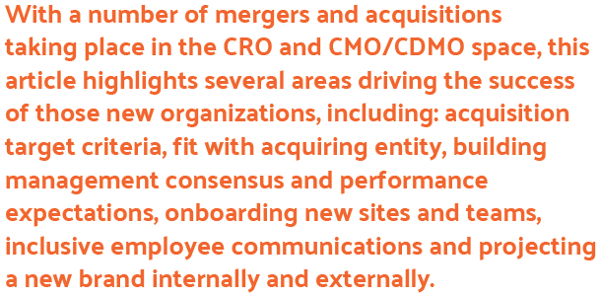
Acquisition potential is predetermined by your criteria
Successful acquirers know what they are looking for before they begin. They have developed insights driven by thorough analyses of markets, customers, competitors, regulators and internal capabilities that lead them to identify a handful of very specific acquisition criteria. Moreover, these criteria enable a dispassionate evaluation of the target’s fit from a strategic, financial and cultural perspective.
Capturing the full potential — mining for Silver and Gold
Most research indicates that only 40% to 60% of mergers succeed — and just 30% are cross-border mergers (Association for Corporate Growth). What exactly is a successful merger, and why aren’t there more success stories? Generally, a merger is considered to be successful if the company achieves both the strategic imperative behind the merger and the merger synergies and operating results promised when a deal is announced.
Regardless of the strategic imperative, it has been our experience that the most successful mergers recognize that true long-term value is found in the white spaces within and between key value-creation functions (Product Development, Sales & Marketing and Supply Chain), while less successful mergers tend to focus too much attention on back-office integration and systems consolidation.
This is often immediately reinforced by the creation of a single Merger Integration team, with functional departments each addressing issues related to their functional scope. Instead, we recommend a two-pronged approach, reporting to an Integration Team Leader.
SILVER TEAM This team takes the internal perspective, and is responsible for day one execution and synergy capture (cost reduction) related to Human Resources, Legal, Finance & Accounting and Information Technology. A key role of this team is avoiding employee defections and managing employee communications.
GOLD TEAM This team takes the external / customer-focused perspective, and is responsible for maximizing the value contribution (revenue and profit) of the Product Development, Sales & Marketing and Supply Chain organizations. A key role of this team is avoiding customer defections and managing external customer communications.
Capturing Value in the White Spaces
The Gold Team should be formed to specifically focus on leveraging the synergies within and between the value-creation assets entrusted to the newly combined organizations. Revenue increase during a merger is always more difficult to achieve, and takes longer than expected.
Don’t underestimate the degree to which competitors will seek to poach your best customers and your best sales people, as your team develops strategies to address the following:
Product Portfolio
To what degree do we need to rationalize the existing portfolio of development projects? Can we establish common platforms for existing products?
Innovation Agenda
How do we best combine our teams to increase efficiency, fully leverage new capabilities and improve innovation?
Sales Channels
How can we consolidate our sales force to remove overlap yet improve customer retention and sales?
Marketing & Branding
How do we enhance and project our brand(s)? To what extent, and when, do we combine or shift our brands? What messages do we want our customers to hear during the merger integration?
Supply Chain
When and how do we introduce new capabilities? To what degree can we consolidate, and how do we make this seamless for our customers?
Clearly Defined Integration Strategy
To successfully integrate two companies, the approach must be consistent with the strategic intent. Guiding principles, priorities and governance must reflect the logic behind the merger. A well-defined integration strategy should clearly articulate both financial and non-financial goals, as well as risk mitigation strategies.
The following areas of focus are foundational to the ultimate success of an acquisition:
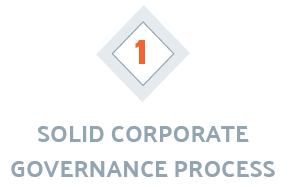
Comprehensively linking strategic intent to principles, processes, people, measurements and communications is challenging at the level of one company. Introducing a second company and stakeholder group to the mix multiplies these complexities. Decision-making authorities and approaches must be well defined. Cross-functional coordination, not only in the timing and execution of merger tasks, but also in the timing and consistency of communications to customers, employees and suppliers, is absolutely critical.

Bringing disparate groups of people together from different companies may be more difficult than it sounds. Subtle differences in language, decision-making, performance meas-urements, incentives — “culture” — can translate into major differences in expectations and behavior. Addressing these differences takes real work on the front-end of any merger, and throughout the integration period. Allowing differences to “resolve themselves over time” is a recipe for failure.
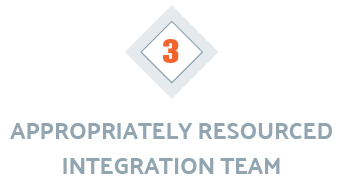
Selecting the right individuals to lead the integration effort is essential. Those you choose will need to move quickly and make tough decisions based on limited information, yet remain sensitive to the needs and concerns of customers and employees from both companies. Although most of the organization should remain focused on running the existing business, full-time resources must be dedicated to the merger integration effort. Furthermore, incentives, for the integration team and adjacent leaders critical to the integration, should be implemented and equitably aligned across the organization.
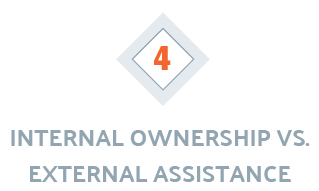
A central issue in the integration process is to find the right balance between internal and external resources to ensure success.
We believe it is imperative to have your people take ownership and responsibility for the success of the merger. A consultant’s role is to help your people succeed. They should provide objectivity and practical experience in aligning the integration strategy with the merger’s strategic intent and an organization’s capabilities, honest evaluation and guidance regarding cultural and leadership challenges, cross-functional orchestration, continuous review of risk and risk mitigation strategies, and a persistent focus on maximizing merger synergies.
Fewer, more senior-level consultants can provide the coaching and guidance needed (and address management bandwidth issues), whereas a small army of more junior-level consultants can overwhelm your team with endless task lists, stretching them thin, distracting them from running the day-to-day business and increasing the risk that bigger- picture issues go unaddressed.
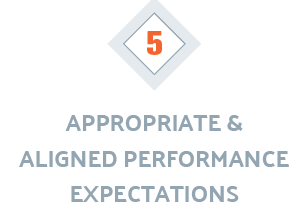
Setting and aligning performance expectations begins well before the acquisition transaction even closes. As the acquirer builds its valuation model and identifies both revenue and cost synergies, expectations are being quantified and bought-in-to by leadership. Successful acquirers evaluate the financials both from an acquisition justification perspective and how they will operate the business once acquired. Performance ex-pectations developed and established in this process enhance the likelihood of a successful acquisition.
In conclusion, successful mergers and acquisitions thrive on intentional, measurable and adaptive plans with dedicated resources incentivized to deliver results – capturing both the silver and the gold.

About the author
Bruce Miles Lead, Mergers & Acquisitions Integration,
Think Tank Partner,
Nice Consulting Bruce Miles has 30+ years of experience in business strategy, operational excellence and corporate development. His clients have included several of the world’s leading life sciences, retail, consumer and industrial companies. Prior roles Bruce has held include COO of a Philips Healthcare division, Consulting Partner with Ernst & Young, Managing Director at AlixPartners and Distribution Sector Executive at IBM.
LinkedIn www.linkedin.com/in/bruce-miles-87b77721
Email [email protected]